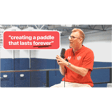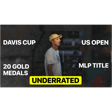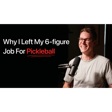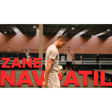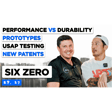
Paddle testing & design with USA Pickleball's Director of Equipment & facilities
I talk with Carl Schmits, Managing Director of Equipment Standards and Facilities Development over at USA Pickleball. We talk about paddle delamination, thermoforming, facilities and courts, paddle testing, his background and how it shaped who he is, and his perspective on the current landscape of the sport and what aspects can and will keep it from growing.
Chapters
00:00 Intro
02:04 Guest introduction
03:02 New testing tool Optical Scanning Platform
05:45 What is the scanner looking for?
07:30 Travis Rettenmeier and PPA Red Rocks
09:25 What about paddles already out on the market
09:54 Delamination
12:10 Evolution of paddles
14:20 How to detect delamination
17:15 What is USAP’s role in disputes and conflicts in competition
18:45 How does PPA not being USAP sanctioned effect the tournament?
21:12 How quickly does the testing provide results?
24:20 What paddle does Carl use?
25:22 MLP Daytona thoughts
27:01 What do you think is the best way to regulate the standards for testing
31:31 Benefit of open throat paddle design
34:30 Carl's background before Pickleball
44:30 Facilities design and development
50:00 USAP updates
57:18 Advice
01:00:40 Closing, info, resources
.
Leave a comment with your thoughts on rules and regulations, which should go and which should be added.
.
#pickleball #pickleballpaddle #usapa #usapickleball #podcast
.
Check out all the episodes here https://www.youtube.com/@buildingpickleball
.
💲 DISCOUNT CODES: Volair Pickleball discount code 'LIM20' at checkout for your discount. You can also use this link: https://www.volair.com/discount/LIM20?rfsn=7160391.899031&utm_source=refersion&utm_medium=affiliate&utm_campaign=7160391.899031
.
I use Epidemic Sound, sign up for a 30-day free trial here https://share.epidemicsound.com/iro87j
.
👤 CONTACT: Sponsorship, business, or just to show some love: Email: buildingpickleball1@gmail.com 📸 https://instagram.com/buildingpickleball





